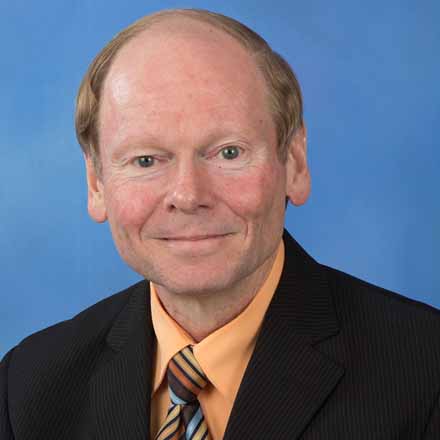Questions About CME Credit? AAFP Has Answers
April 23, 2019 02:17 pm News Staff – In 1947, the AAFP, then known as the American Academy of General Practice, realized that the effectiveness of its members depends on sound, up-to-date continuing education as well as on comprehensive training. Thus, the founders wrote into the Academy's bylaws(477 KB PDF) the requirement that active members complete a minimum of 150 hours of approved continuing education every three years. The following year, the Academy created the first accrediting body for CME in the United States to ensure that education provided to family physicians was held to a standard.
Fast forward to 2019, and the AAFP is one of only three accrediting bodies for physicians in the United States and the only one focused solely on the needs of family physicians. A few key points differentiate AAFP credit from that of other accrediting institutions:
- The education has been vetted to ensure the content is relevant to the scope of family medicine.
- Credit is awarded to an educational activity, not to an organization.
- The education is reviewed to ensure it is independent, balanced, transparent and free of commercial bias.
- AAFP credit is recognized by national and international CME accrediting bodies and medical regulators, and enjoys agreements with many of them, including the American Board of Family Medicine (ABFM).

AAFP News recently discussed the AAFP's Credit System, the value of its credit and coming changes to the system with Steven Furr, M.D., chair of AAFP's Commission on Continuing Professional Development, which oversees the credit system.
Q: What distinguishes the AAFP Credit System from other credit systems?
A: We are fortunate here at the AAFP to have founders that thought ahead and knew the importance of CME. The AAFP takes the additional step of reviewing every educational activity and/or educational session to make sure it is relevant to the scope of family medicine and eligible for CME credit under the AAFP Credit System's eligibility requirements. These additional steps set the AAFP apart by adding a layer of quality assurance for the members.
Q: Can any organization's CME activities, such as a hospital's grand rounds, qualify for AAFP credit?
A: Yes, as long as the activity meets the AAFP Credit System's eligibility requirements. Last year, the AAFP Credit System reviewed education from various types of CME provider organizations and just over 17,000 individual educational sessions. This includes the AAFP's CME, state chapters' CME and CME from other organizations, such as medical schools, medical education companies and, yes, even a hospital's grand rounds. It is important to note that activities produced or influenced by commercial interests are not eligible.
Q: How does an AAFP member find educational activities that are approved by the Academy?
A: Members seeking CME activities with AAFP credit can find them via our CME search tool. This accredited education may help them meet the CME requirements for membership, board certification and state licensure.
Q: How is AAFP-accredited education added to a member's transcript?
A: If the CME is an AAFP-produced self-study activity, the activity will be automatically added to your transcript after you successfully complete the post-test. Participants in AAFP live activities will receive a special URL that will allow them to select the sessions that should be added to their CME transcripts. If the education is produced by another CME provider, you can report your CME through the AAFP's CME Reporter. There, you can discover and report your CME by searching for it by title, CME provider, location, etc. Once reported, the education, with associated credits, will be added to your CME transcript.
You can also ask the CME provider to report the credit on your behalf by using the CME credit reporting sheet.
Q: What excites you about the future of AAFP credit?
A: I'm looking forward to the enhancements that the AAFP is working on to make it easier for members to find the education that we already accredit. The Academy in the process of enhancing the search tool to allow for more search options that enable members to find education that suits their unique learning style and preference. They are also working on enhancing how members find, claim and label education on their transcript to better correspond with some of the ABFM's requirements.
Overall, I think the road forward with the credit system is continuing to make all aspects of CME more personal for the individual member. Whether it's through personalized learning plans, enhanced CME search and reporting options, or helping learners meet their individual CME requirements, the future is in personalizing the learning experience of our members.
Q: If members are attending CME activities that don't have AAFP credit, what should they do?
A: Talk to your CME planners and simply ask them to apply for AAFP credit and also ask them to keep AAFP credit in mind for their future CME activities. Most CME providers are happy to apply for AAFP credit if they know it will add value to your learning experience and help you meet your requirements. Make them aware that family physicians give preference to attending CME meetings that have AAFP credit.
Also, be willing to get personally involved. CME planners are often looking for physicians willing to serve on their planning committees. Remember, for a CME activity to receive AAFP Prescribed credit, a family physician who is an AAFP active or life member must be directly involved in the planning of the activity to ensure the content is relevant to the specialty of family medicine.
If you personally provide the education and want more information on accreditation, visit the AAFP Credit System. In addition, questions can be submitted to the AAFP Credit System at cmecredit@aafp.org or to the AAFP's Member Resource Center at 800-274-2237.
Related AAFP News Coverage
AAFP Credit System Reconsiders Functional Medicine Topics
(3/28/2018)